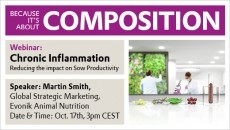Ushering the commodity trading industry into the digital age

The association launched earlier this month and is striving to develop a consensus of best practices and procedures for the grain export industry, according to group information.
The non-profit organization is trying to start an industry working group with members from commodity supply chain companies that work with ocean-bound trade, said David Lehman, managing director of the Global Commodity Trade Association (CGTA).
“These initial members of the association will be tasked with identifying where the largest pain points are for the international commodity trade sector and seeing if we can deploy digital technology to can make those processes more efficient,” he told FeedNavigator.
Currently, when a commodity like corn is sold for export, there is a “cumbersome paper process” used to document the sale and “consummate that transaction,” even if an electronic system like email is used to start the transaction process, he said.
“When the shipment takes place, documents like the bill of lading, grade and the quality and weight certificates, [and] they have to have a country of origin certificate [that] is often required by the buyer, these are paper documents that get shoved into a manila envelope and FedExed from the seller to the buyer,” Lehman said. “We think there’s a more efficient way to do that by deploying technology.”
The goal is to transition the paper process into a digital process, he added.
“Shipments of soybeans from the New Orleans Gulf to China or shipments of corn or wheat from the US to Japan, and shipments from Brazil to other destinations will be a focus, we believe, based on our initial feedback,” he said.
Phase one and two development
The first goal for GCTA is to establish a working group of industry members from 10 major firms working with the global commodity trade, said Lehman. The plan is to have the members identified and committed to the project by the end of November.
At that point, meetings are set to start, and members will investigate documents of interest for the digitization process along with commodities and trade flows of interest, he said. The work will solicit input and feedback from industry members on a wider scale.
“Phase two will really be focusing on how the technology can be deployed or expanded to country elevators, port facilities, rail and then, in the horizontal sense, to hedging and derivatives trading and other commodities,” he said.
That phase of the project is anticipated to have a more direct role for feed industry members in several regions including the US, China, Brazil and Europe.
“These are significant livestock producing and consuming countries,” he added.
“The documentation that exists going vertically down the supply chain to a soybean processor in the US who is producing soybean meal and that soybean meal [is] moving from the processor to the feed manufacturer and on to the feedlot – that’s a different set of documentation,” Lehman said. “But if a system can be developed to support digitization the documentation for exports, I don’t think it’s beyond imagination that that can be expanded and utilized, or some variant of it could be, as you go down the supply chain to the feed industry and to the actual livestock production facility.”
Parallel initiative to work being done by the large traders
However, the association’s efforts are not intended to interfere with the work currently being done by Archer Daniels Midland Company (ADM), Bunge, Cargill and Louis Dreyfus Company (LDC) and Glencore on modernizing global agriculture commodity trade operations:
“How we’re different is we want to start with individual documents – a bill of lading is the one that makes the most sense to us and that we hear a lot about – and see if we can standardize that document,” said Lehman. “Today it’s not standard across companies or different commodities.”
“In order for things to work on the distributed ledger network, which is what we kind of envision the technology being, the documents need to be standardized first - so that’s our approach,” he added.
The organization is not planning to develop software or new technology, he said.
Instead, the interest is on “harmonizing practices and procedures” for industry members.
















